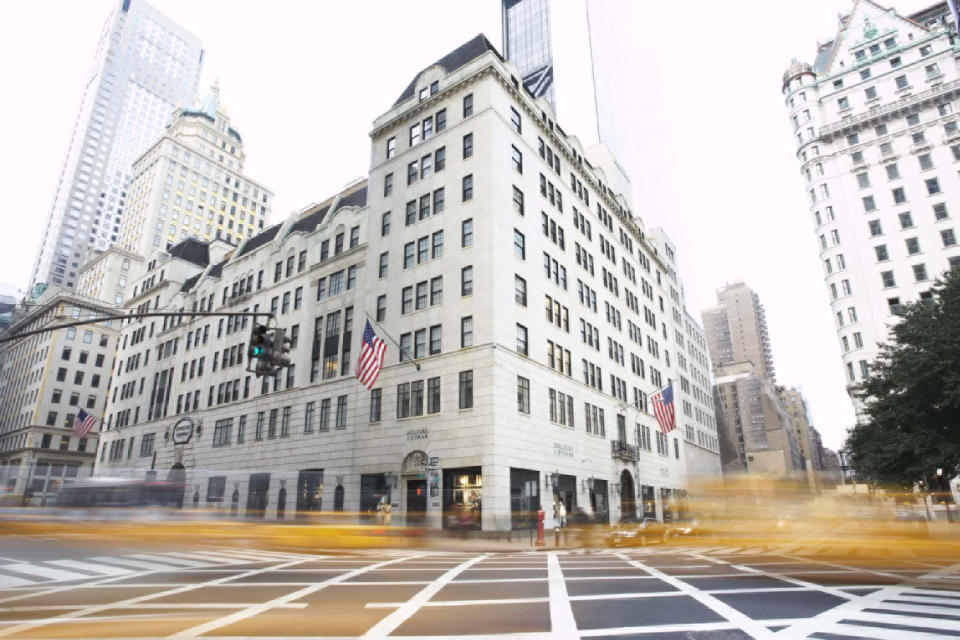Neiman Marcus Group Tracking Business Above Pre-COVID-19 Levels

The Neiman Marcus Group, apparently transcending the volatile stock market and the nation’s sky-high inflation, is generating sales volumes and margin gains surpassing pre-COVID-19 levels.
That’s according to NMG’s chief executive officer Geoffroy van Raemdonck, who on Tuesday selectively disclosed certain fiscal third-quarter statistics to the media, after the full report was issued to investors. “We really have outstanding results and sustained profitable growth,” he told WWD.
More from WWD
Van Raemdonck attributed the results largely to shoppers returning to stores, digital strength, robust full-price selling, adding luxury brands and exclusives to the offering, and a richer calendar of events, which he referred to as “retail-tainment.”
As a private company, NMG does not publicly report its financial performance, but has been anxious to provide periodic report cards to its designer and brand partners and the press.
Among the results that were made public, for its third fiscal quarter ended April 30, NMG reported:
Comparable sales grew over 30 percent, beating pre-COVID-19 levels.
Comparable gross merchandise value grew in the high 20 percent range compared to pre-pandemic 2019.
Adjusted earnings before interest, taxes, depreciation and amortization margin expansion of over 300 basis points, compared to the 2019 quarter, and a 150-basis point expansion compared to last year’s quarter.
Ample liquidity to invest in the business and no outstanding borrowings under the ABL facility.
“Almost half of the Neiman Marcus stores are experiencing all-time high sales volume. BG [Bergdorf Goodman] is also seeing significant recovery in stores, beating 2019 numbers — attributed to occasion dressing, New York City’s recovery, growth in tourism, and growth in new customer segmentation,” van Raemdonck said.
Much of van Raemdonck’s discussion centered on how the luxury retailer is investing back in the business, including $300 million to renovate the Bal Harbour, Florida; Atlanta; White Plains, New York; St. Louis; Oak Brook, Illinois; Houston; Paramus, New Jersey; San Diego, and Tysons Galleria, Va. stores. The figure includes landlord and vendor contributions.
The first remodel, at the Atlanta store, will be completed this year. Six store remodels are slated for next year, and two stores the year after. In several cases, men’s, shoe and handbag areas will be expanded, and several incoming brands require building dedicated shops. In some locations, bars and cafes will be added, and new restaurants in select stores are being considered. Food and beverage offerings encourage shoppers to stay longer in the store and buy more. In addition, beauty services will be enhanced and fitting rooms will be enlarged.
Van Raemdonck said Bergdorf Goodman during the pandemic had “lots of continuous changes,” including remodeling five designer shops and the addition of Dior men’s and women’s shops last February, and the Valentino Archive collection in March. “There will be continued improvements,” he added.
Installations such as Prada Tropico, which ran for three weeks starting mid-May at the Neiman’s stores in Northpark Dallas and San Francisco, “can generate seven figures within a day or two after the launch,” van Raemdonck said. “We can create heat and experience in one or two stores but we see a huge reverberance or halo affect across all the stores. That speaks to the customer wanting a theater experience and something exclusive.” Prada Tropico featured multiple combinations of colored stripes and light effects. Starting next week and through the summer, Christian Louboutin, Burberry and Valentino are staging installations at NMG.
“The vast majority of our top 20 brands are eager to participate in our retail-tainment,” van Raemdonck said.
Last year the company invested more than $200 million in technology initiatives such as Connect, a tool for associates to communicate with customers; the acquisition of Stylyze; the Neiman Marcus Stanley app, and Digital Labs. In addition, Neiman’s said it’s committed to spending more than $90 million to enhance its supply chain, including systems and fulfillment centers.
On May 31 this year, Farfetch closed on its $200 million minority investment into NMG. “We are working with Farfetch on the blueprint for re-platforming bergdorfgoodman.com by summer 2023, and once that is in place we will be expanding bg.com internationally,” van Raemdonck said.
Sometimes retailers are able to report big gains because of easy comparisons from past periods. But van Raemdonck said his company’s fiscal third-quarter performance comes on top of strong performances during and before COVID-19. “When we look back at 2019, we were in a healthy place. We were up against 2018.”
Neiman’s last quarter, he said, amounts to a “reacceleration” of the business.

Matteo Prandoni/BFA.com
Van Raemdonck would not specify any dollar figures, or the actual EBITDA margin, though he did say, “Our EBITDA margin rate is in the mid teens which is really strong.” Asked if the company is net profitable, he replied, “We are significantly net profitable.” It has helped that the company was able to eliminate most of its debt through its Chapter 11 restructuring, in a debt-for-equity deal in September 2020 leading to new ownership.
Regarding the macroeconomic environment, “We see a lot of positive elements,” he said. “We see more loyal customers spending above pre-COVID[-19] levels,” as travel and social activities this year exceed pre-COVID-19 levels, he said. Lower-priced retailers, such as Target and Walmart, are experiencing just the opposite, citing reduced spending by consumers.
NMG has been roping in new customers this year, at a double-digit pace compared to fiscal 2019, van Raemdonck said. “One of six comes back within 90 days.” He also said the new, post-pandemic customer is seven years younger, on average, than the loyal Neiman’s customer, defined as someone spending $10,000 or more annually at the store. Loyal customers comprise over 40 percent of Neiman’s customer base.
According to van Raemdonck, Gen Z, Millennials and Gen X represent 60 percent of the customer base and Neiman’s shoppers, on average, are in their mid-30s; before the health crisis, customers on average were in their mid-40s, he said.
“We are not talking just last quarter but broadly speaking, we continue to see strength in demand. We do recognize stock market volatility and inflation pressure. We are monitoring that carefully, but right now we’re not seeing the impact.” That’s a big difference from past CEOs at Neiman Marcus Group who would underscore that the financial performance of luxury retailing mirrors the performance of the stock market.
Asked if he has seen any slowing of consumer spending, van Raemdonck replied, “We are not seeing that.”
He also emphasized that “luxury brands are turning to the U.S. as a place to invest, and they’re choosing us to have more distribution.”
Van Raemdonck said Neiman Marcus added over 600 new points of distribution with designers and brands in fiscal 2022, including over 200 brands for spring 2022, many of which were exclusive and had an ESG tie. He expects NMG to add another 140 points of distribution in fall 2022. A single point of distribution, for example, would be a designer shoe shop in a store, or a women’s ready-to-wear shop in a store, which together would count for two points of distribution.
Some luxury brands are reducing their points of distribution with department stores including Neiman’s, as van Raemdonck acknowledged. “But literally, the net number of additions would still be very close to 600 points of distribution,” he added. “There are some trade offs.”
Regarding inflation, “Certain of the strongest luxury brands have increased their prices, but we have not seen it across the portfolio. It’s linked to a few luxury brands.” Gauging price increases in luxury fashion is difficult because some of it would stem from inflation, some from new looks and style enhancements.
“As we go into fall we will have more inventory than a year ago and that is appropriate given the level of demand we see,” said van Raemdonck. “Inventory is up in the double digits this quarter and will be up in the fall, but it was significantly down last fall.”
About 90 percent of NMG’s merchandise comes from vendors in the U.S. and Europe. “Right now we have not seen any significant disruption in supply chain,” possibly a week to two weeks late on deliveries, on average. “Our windows of shipping are three months so it’s minor.”
NMG, through Farfetch taking a minority stake, is investing big in bergdorfgoodman.com. Van Raemdonck said that unlike Saks Fifth Avenue, which last year split its store and dot.com operations into separate companies, “We don’t intend to separate our online business. Right now, we are very committed to integrated retail. It’s about integrating the two channels of business. Customers are channel agnostic. They want seamlessness.”
In Dallas, NMG could receive $5 million in incentives to open a corporate hub in Tower at Cityplace on North Central Expressway just north of downtown. The city has approved the incentives. “We are now finalizing all the details. It’s a multi-step process including many parties. There’s more to come on this – shortly,” van Raemdonck said. Other corporate hubs are opening in New York, Mumbai, India and other locations. The luxury retailer will maintain its three levels of office space at the downtown Dallas Neiman Marcus store and previously closed its Renaissance Tower and 1700 Pacific offices in downtown Dallas, leading to workforce reductions.
By decentralizing headquarters into regional hubs, van Raemdonck said employee retention rates and the ability to recruit talent both increase.
“We are referring to these spaces as ‘hubs’ as opposed to corporate offices because the intention is not for these headquarters to become spaces where all corporate associates physically go to work every day. Instead, they will serve as modern workspaces to connect networks of associates across NMG,” the CEO said.
At the Neiman’s division, last quarter, men’s growth exceeded 60 percent, driven by rtw and shoes, which both doubled in volume; women’s shoes grew by over 50 percent, and handbags rose over 70 percent. Women’s rtw also saw double-digit growth but not as much as the other areas.
At Bergdorf Goodman, handbag sales were up almost 80 percent; shoes rose over 60 percent; fine apparel rose over 30 percent. BG online saw “triple-digit growth in full-price and strong double-digit growth across every customer segment…New online customers were up double digits compared to FY19,” the company said.
In a statement, van Raemdonck said: “Our performance reflects continued strong growth driven by our Revolutionizing Luxury Experiences strategy as well as a healthy U.S. luxury customer. We delivered comparable sales growth of over 30 percent and expanded EBITDA margin by over 150 basis points compared to this time last year, driven by strong full-price selling. While we continue to operate in a dynamic environment, we believe we are well positioned for the future with our differentiated integrated luxury retail model, healthy balance sheet, and strong customer and luxury brand relationships.”

Sign up for WWD's Newsletter. For the latest news, follow us on Twitter, Facebook, and Instagram.

